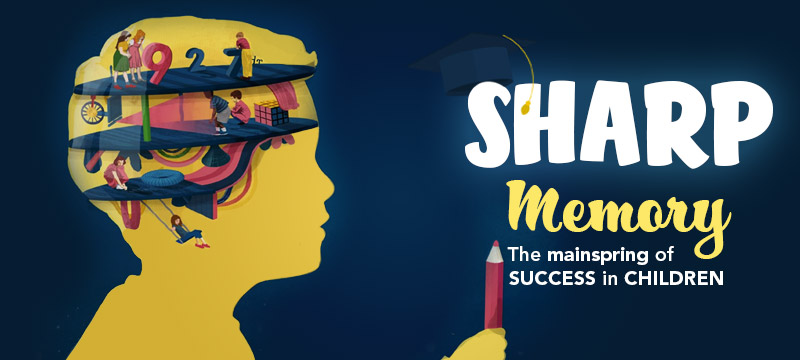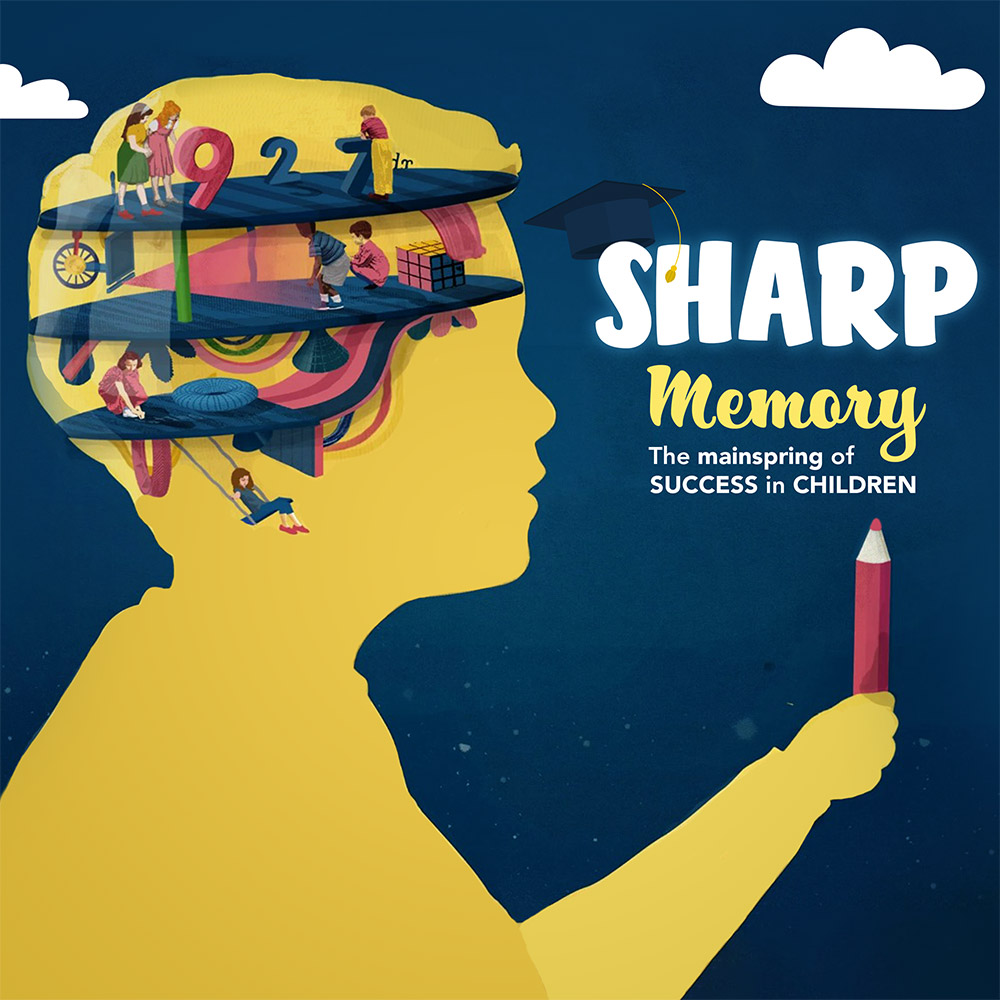
Memory is more indelible than ink
Anita Loos, American actress, playwright, novelist.
A child’s memory starts developing right from infancy. It has been found that babies as young as six months are able to learn and remember ‘cause and effect relationships’. In fact, the cognitive ability of a child grows till the age of four before it reaches its maximum capacity. ‘Memory’ heavily relies on the activities of the front parietal lobe or the “cognition core” of the brain.
In children, sharp memory would mean a better grip of cognitive, language and problem-solving skills. For parents and teachers, it is best to be aware of what kind of memory capabilities a child possesses at a particular age – this knowledge facilitates them to tutor the children more effectively. Understanding the process of a child’s brain development and techniques to improve memory can prove to be helpful in building a solid foundation for learning, both in the classroom and beyond.
What are the types of memory?
- The first kind of memory that children exhibit in the first three years of their life is explicit memory or declarative memory. This is often categorised into semantic memory (the power to recollect facts) and episodic memory (the capacity to recollect experiences).
- The second is the short term memory. Here, the information is rapidly assimilated, but the brain is incapable of processing it.
- The third kind is the working memory that behaves like a computer RAM – information stored in the short term memory is processed here. Critical to behaviour regulation and problem solving, young adults have half the working memory capacity as adults, and it improves with age and practice.
- Long-term memory is where information is stored indefinitely while autobiographical memory is where semantic and episodic memory are combined to create “episodes” from a person’s life.
How to help boost memory power in children?
Let us enumerate some of the key ways through which parents, teachers and care givers can aid youngsters boost their memory.
- Breaking down information to chunks: Children grasp smaller quantities of information. Breaking down learning material into headings, pointers and lists enables the child to recall the information easily.
- Creating mind maps: Build an interconnected map of ideas for the child to learn quicker. Using logic to build memory is the swiftest way for the child to grasp lessons. Training the child to build a memory map once can help him independently replicate the process for other lessons!
- Using visual cues: Most children have a powerful visual memory, so flash cards and picture quizzes are the best ways to boost their memory.
- Creative learning: Let us understand this with an example: simply telling a child that a museum is home to relics might be difficult for him to relate to. Instead, planning a trip to the museum and showing him the artefacts leave a long lasting impression on the child’s mind.
- Questions as a part of the lesson: Only teaching a child isn’t enough. A child has his own curious mind that wanders and seeks answers. Addressing the child’s questions can thus prove to be helpful. This ensures that the child develops a sharper critical thinking and problem-solving skills.
- Rhyming with lessons: Our brains are wired to remember songs and patterns. Lessons imparted via the medium of rhymes and rhythms thus tend to stay on for a lifetime.
- Active learning: Ask the child’s opinions about the topic being taught. Active participation might help the child retain information. Let the child connect to the lesson through his own personal experiences. This ensures quicker learning and better problem solving skills.
- Sensory learning: Some children have pronounced auditory perception, while some can be visual learners. Make sure that the children are taught through sing-songs, along with props, to facilitate the best learning combination.
- Reverse teaching technique: Once the teaching is done, let the child teach back! There is nothing better than children explaining what they have picked up in a lesson – it is a concrete way to retain the information for a very long period of time.
We encourage holistic learning at RPPS
The highly experienced and qualified faculty at Ruby Park Public School (RPPS), Kolkata always encourages complete all-round holistic development of the students. The young minds frame their own impression and we nurture them with optimum utilization of cutting-edge technology and modern pedagogical tools.
Being one of the top schools in the city, this CBSE-affiliated institution imparts education that meets international standards. We have been working tirelessly at moulding and empowering future-ready leaders of tomorrow.
For more information, visit www.rubypark.com

